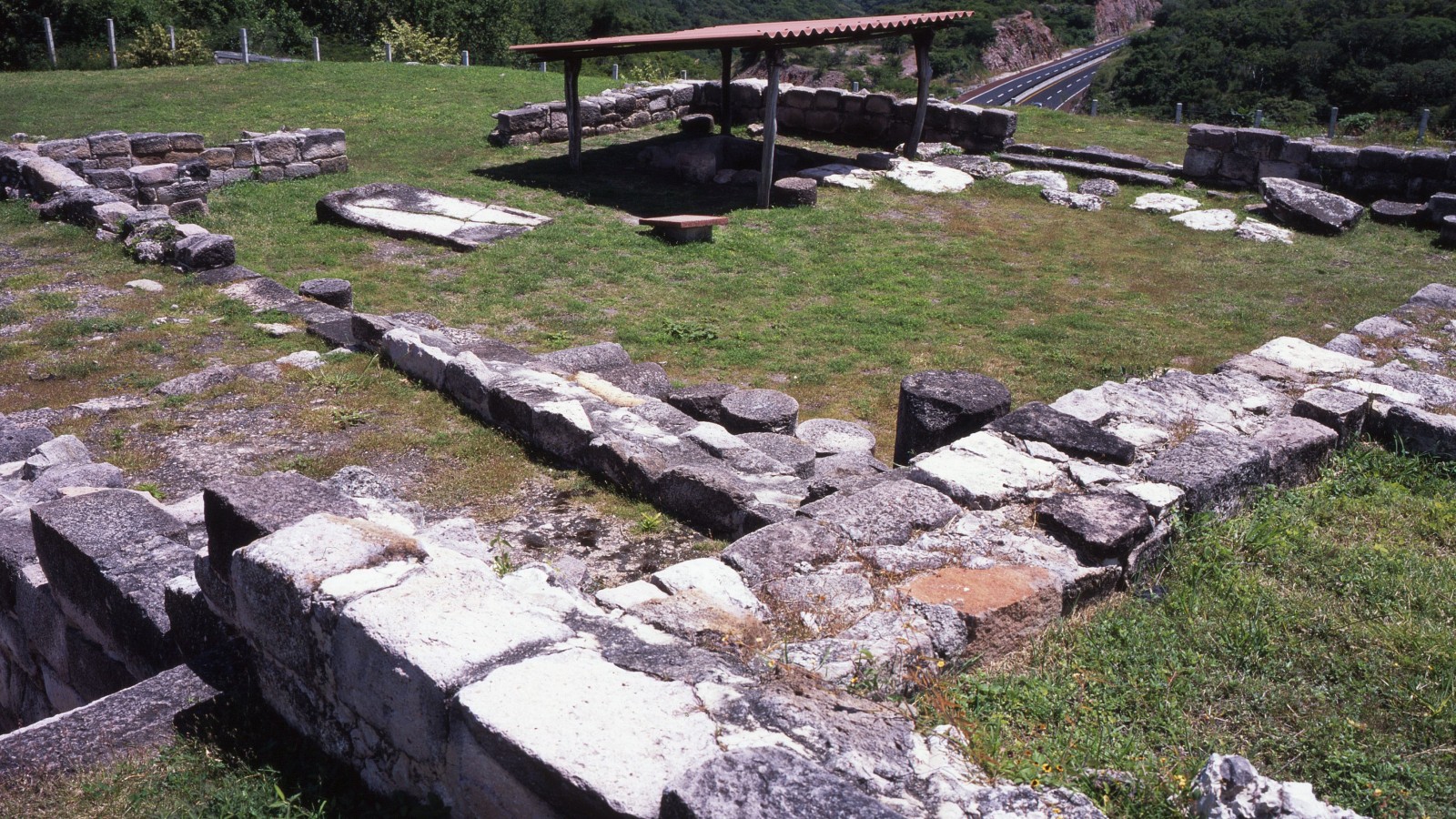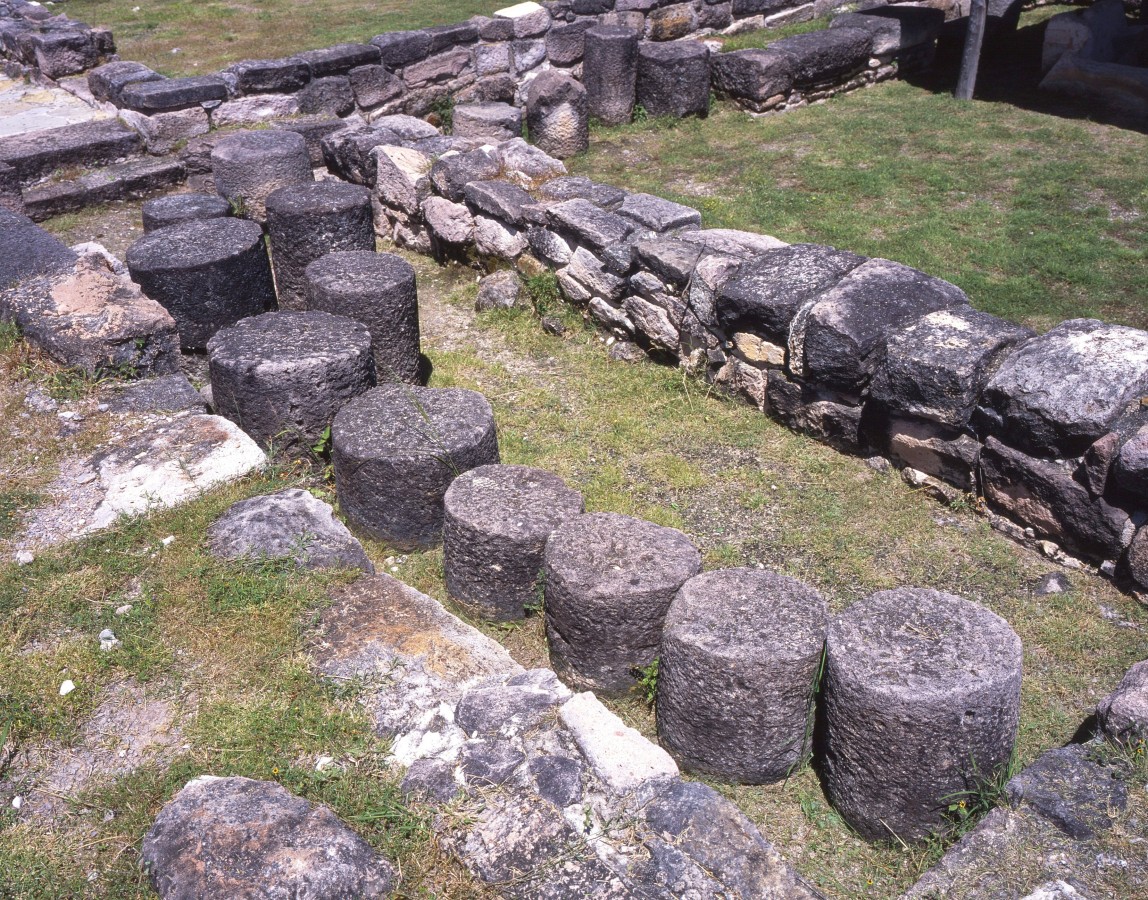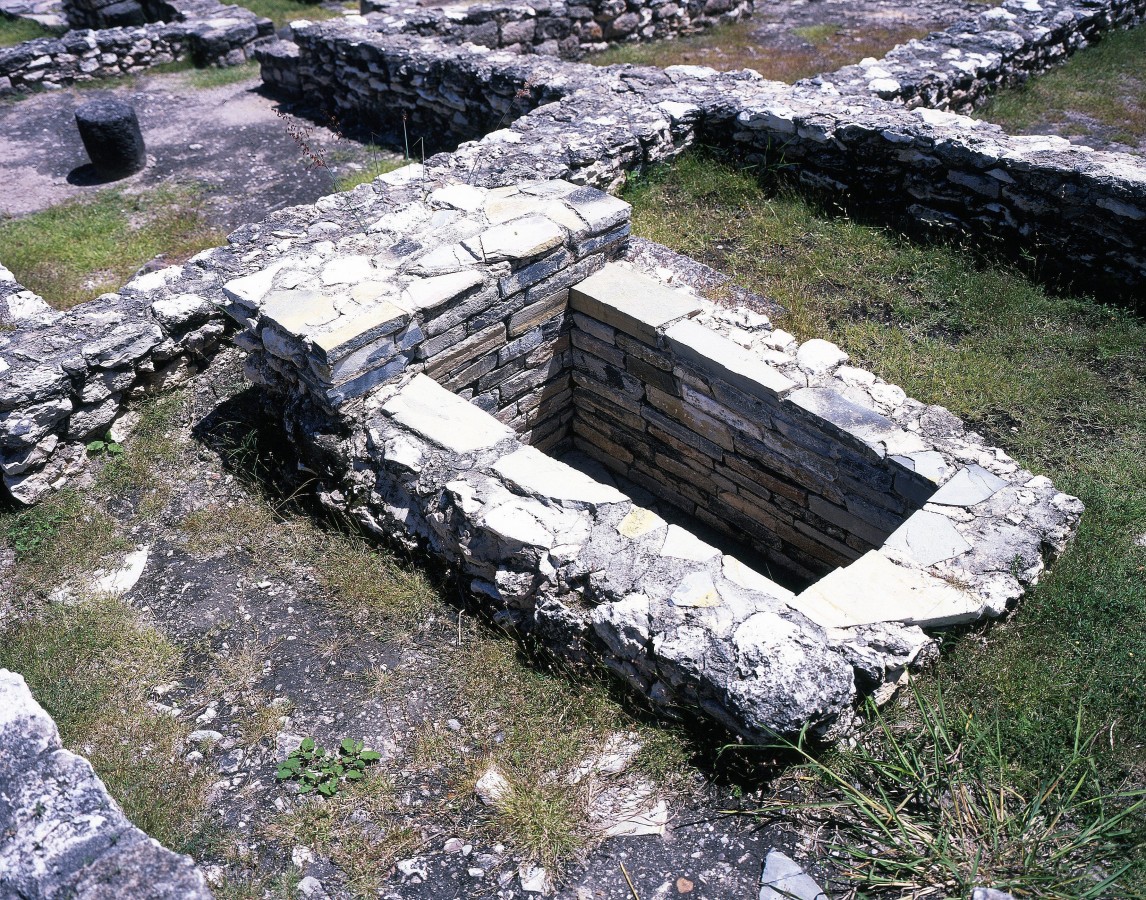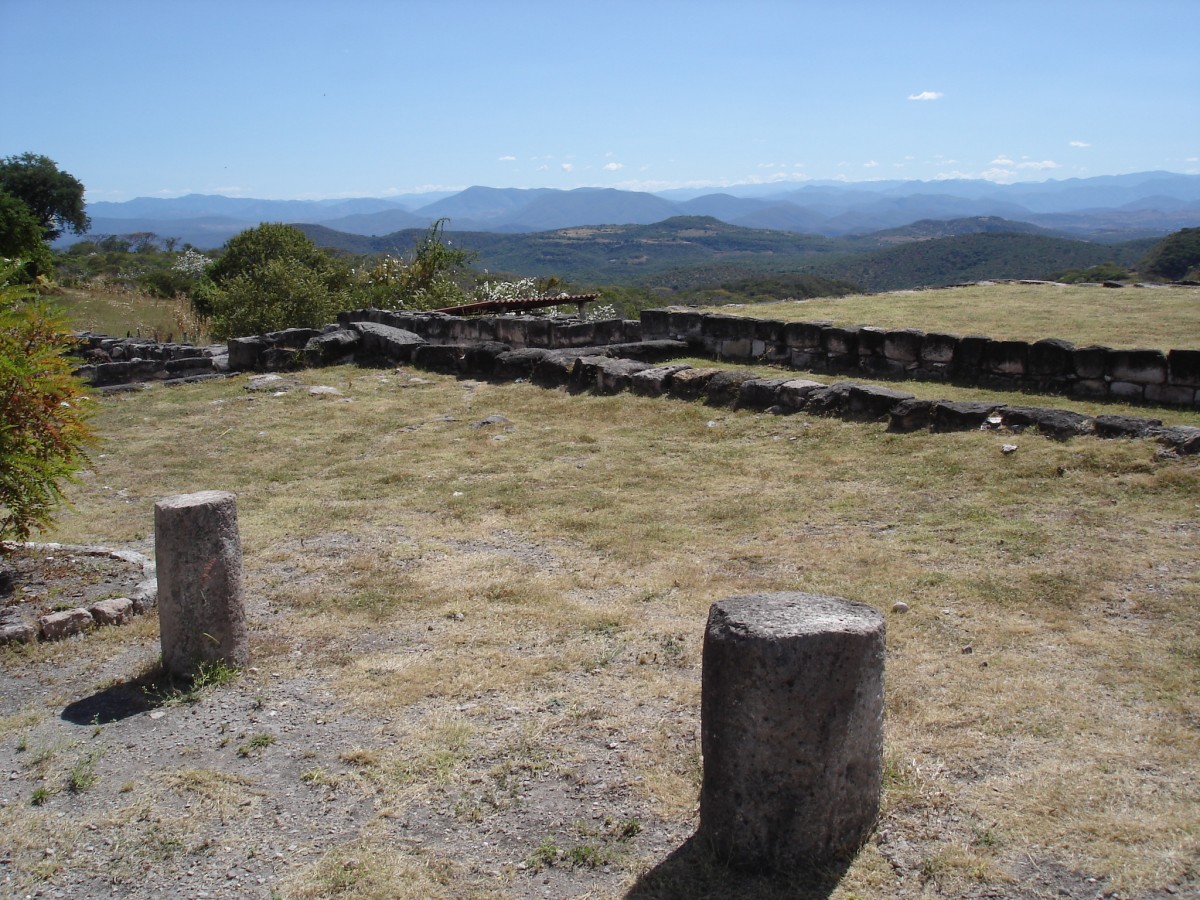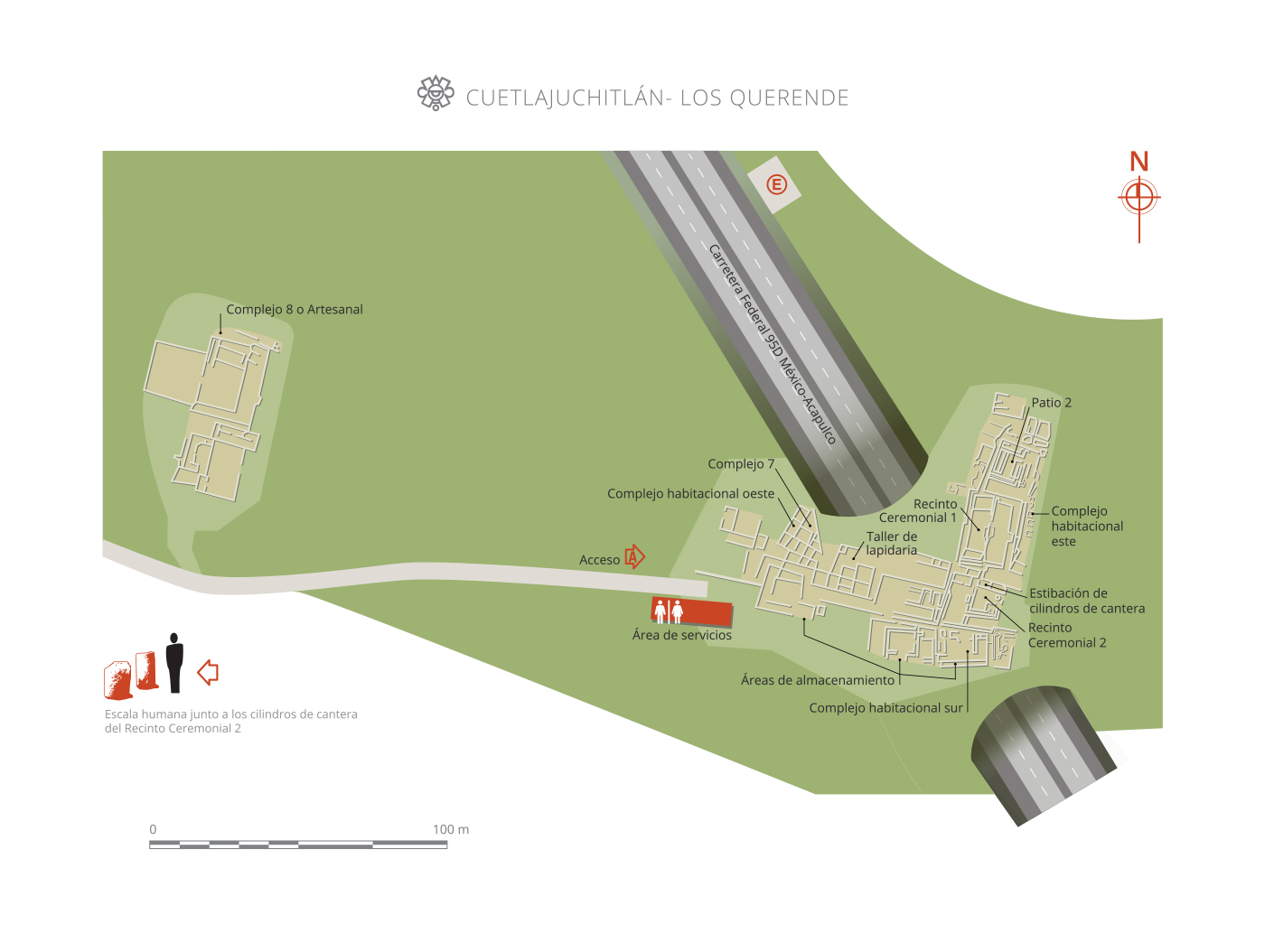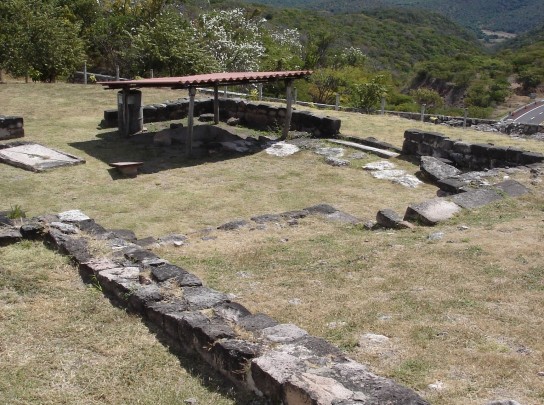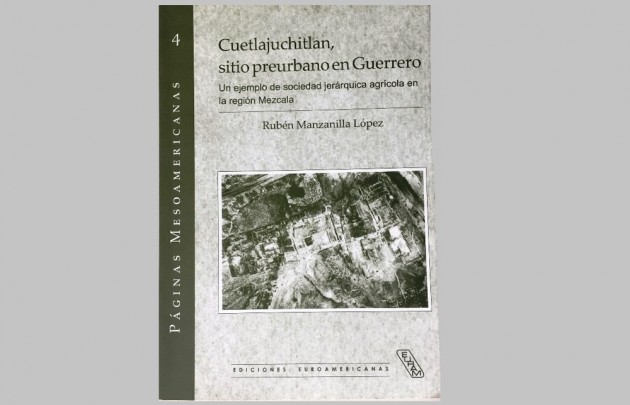Querende (Cuetlajuchitlán)
Place of the red flowers, or the blighted place.
Inhabited for 900 years from 600 BC by Olmec and Mezcala culture people. It is constructed with long stone blocks forming plazas, places of worship and a water supply system. A modern highway was forced to go through a 160 foot deep tunnel to avoid damaging the site.
About the site
At the end of the Late Preclassic, Cuetlajuchitlan was one of the main settlements of the north of the present day state of Guerrero. It was discovered in 1991 during works on the Autopista del Sol (highway). The archeological heritage was successfully preserved thanks to the Los Querende tunnel, which is also the name the locals give the site.
Only two acres of the archeological site’s 35 acres have been excavated. It is known that the settlement was occupied in 800 BC, although it reached its peak between 200 BC and 200 AD. It is distinguished by its robust buildings made from massive carved stone blocks. The stone figurines linked to the Mezcala culture belong to this stage.
During this period of splendor, the elite governors of the settlement came under the sphere of influence of the groups inhabiting the valley of Morelos, who had close ties with Teotihuacan, the great metropolis of the Central Highlands, at the same time as maintaining their relationships with other parts of the state of Guerrero, such as the central region.
The architectural style, with its pre-urban characteristics, is notable for the hundreds of columnar blocks of stone, which were both functional and ornamental. The settlement layout is also characterized by the presence of residential complexes in the far north and south. The settlement’s principal functions and ceremonies were in the central part, distributed around square sunken patios with small central stairways on the four sides.
Only two acres of the archeological site’s 35 acres have been excavated. It is known that the settlement was occupied in 800 BC, although it reached its peak between 200 BC and 200 AD. It is distinguished by its robust buildings made from massive carved stone blocks. The stone figurines linked to the Mezcala culture belong to this stage.
During this period of splendor, the elite governors of the settlement came under the sphere of influence of the groups inhabiting the valley of Morelos, who had close ties with Teotihuacan, the great metropolis of the Central Highlands, at the same time as maintaining their relationships with other parts of the state of Guerrero, such as the central region.
The architectural style, with its pre-urban characteristics, is notable for the hundreds of columnar blocks of stone, which were both functional and ornamental. The settlement layout is also characterized by the presence of residential complexes in the far north and south. The settlement’s principal functions and ceremonies were in the central part, distributed around square sunken patios with small central stairways on the four sides.
Map
Did you know...
- Although we are not certain of the identity of the inhabitants, signs of the Olmecs have been found in Guerrero. Towards the final period of its occupation Cuetlajuchitlan was part of the Mezcala culture zone.
Practical information
Tuesday to Saturday from 09:00 to 16:00 hrs. Last entry 15:00 hrs.
Free entry
Tiene una sala introductoria.
Se localiza en lo alto de una loma cercana al poblado Paso Morelos, en el municipio de Huitzuco, Guerrero.
From Mexico City, take the Autopista del Sol towards Acapulco. In Iguala, turn onto the road to Huitzuco, pass the Paso Morelos toll booth and continue along a dirt road until you reach the site.
Services
-
+52) (747) 471 7121
-
This email address is being protected from spambots. You need JavaScript enabled to view it.
Directory
Jefe del Departamento de Protección y Resguardo de Bienes Culturales
Héctor Torres Calderón
This email address is being protected from spambots. You need JavaScript enabled to view it.
+52 (747) 472 2604

